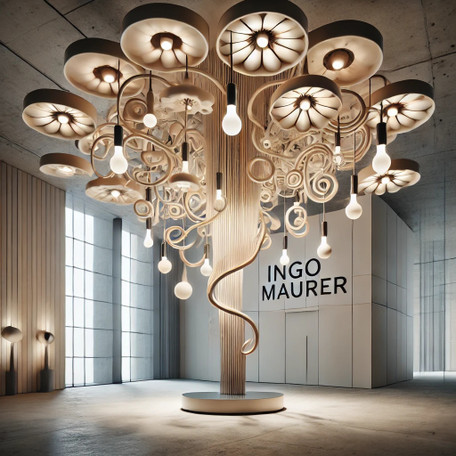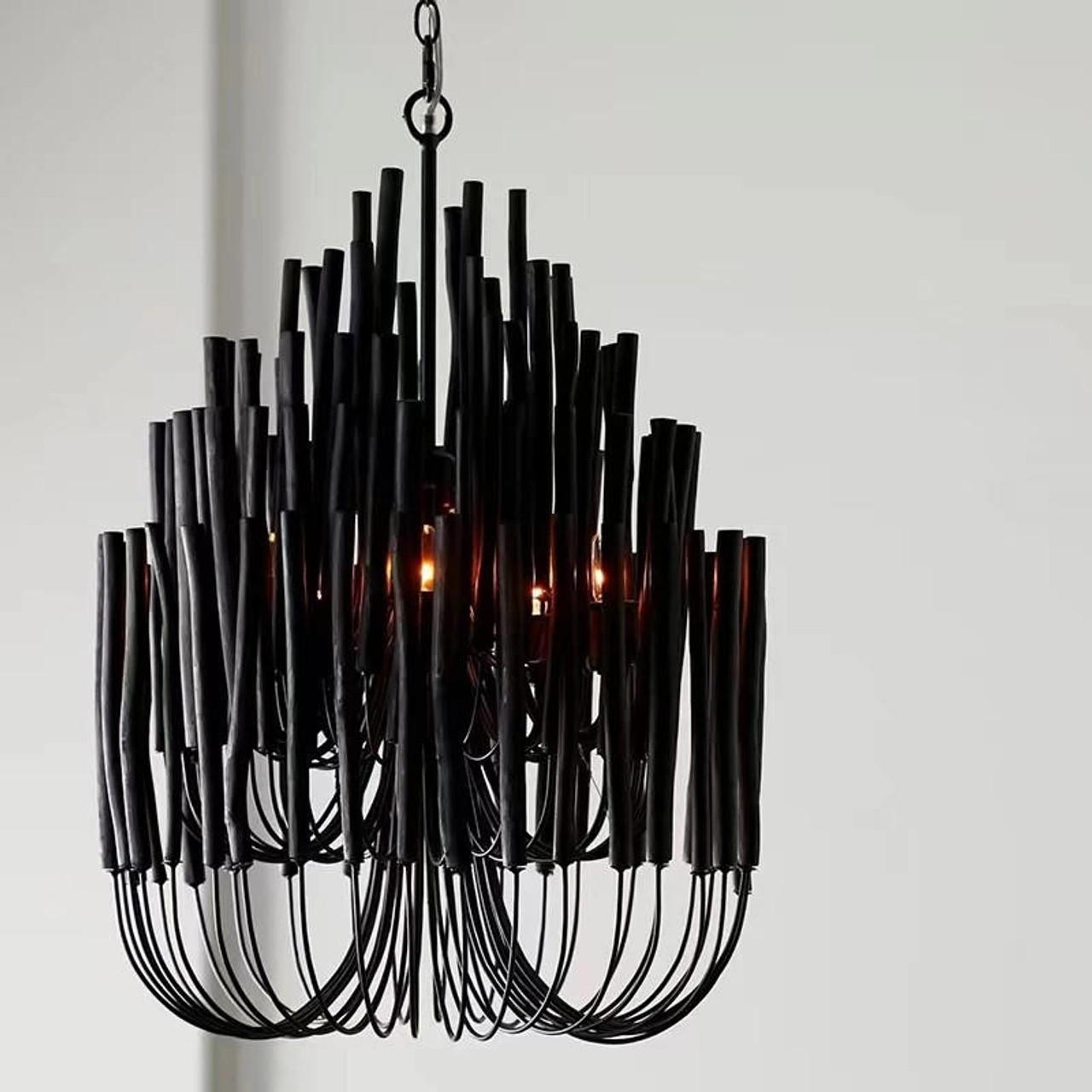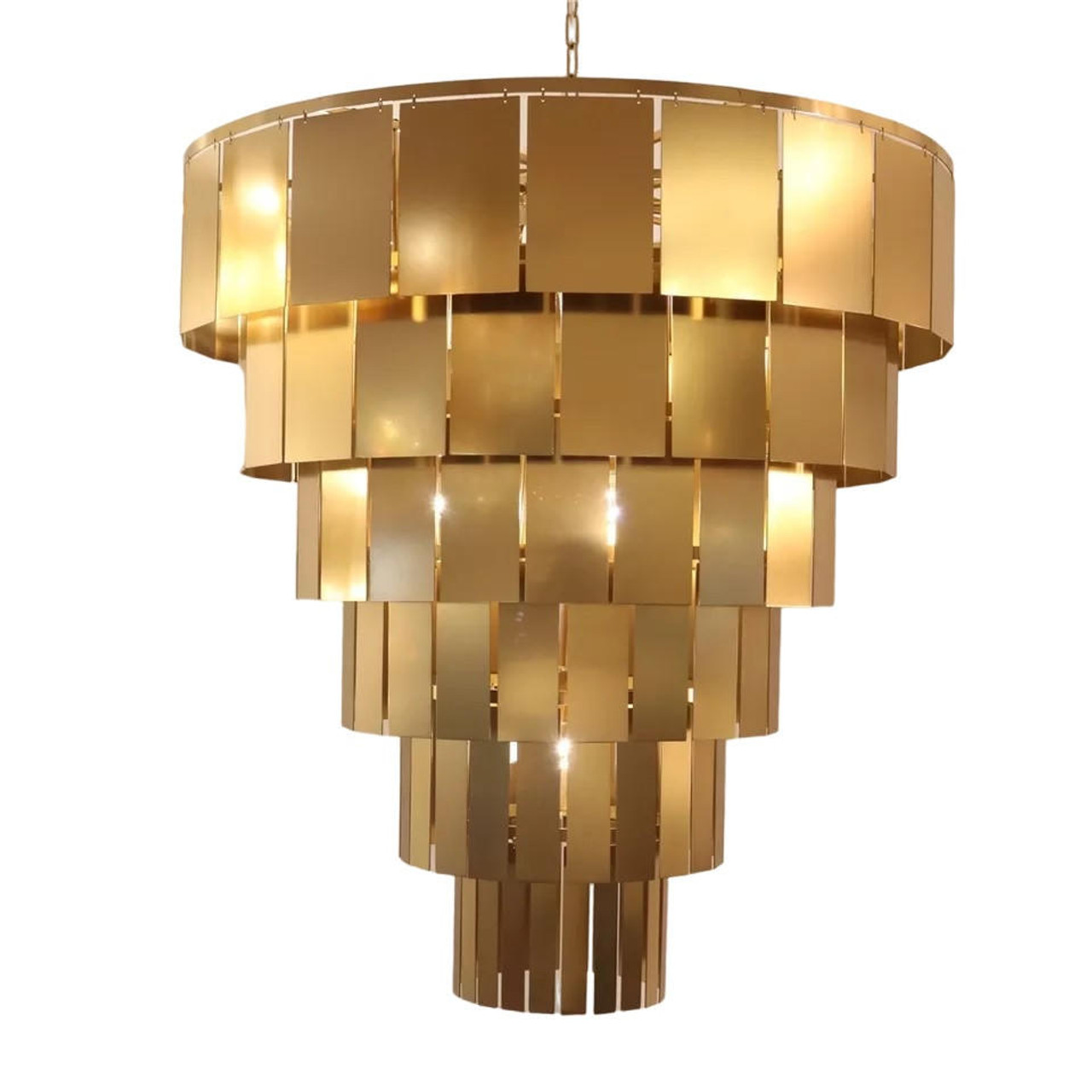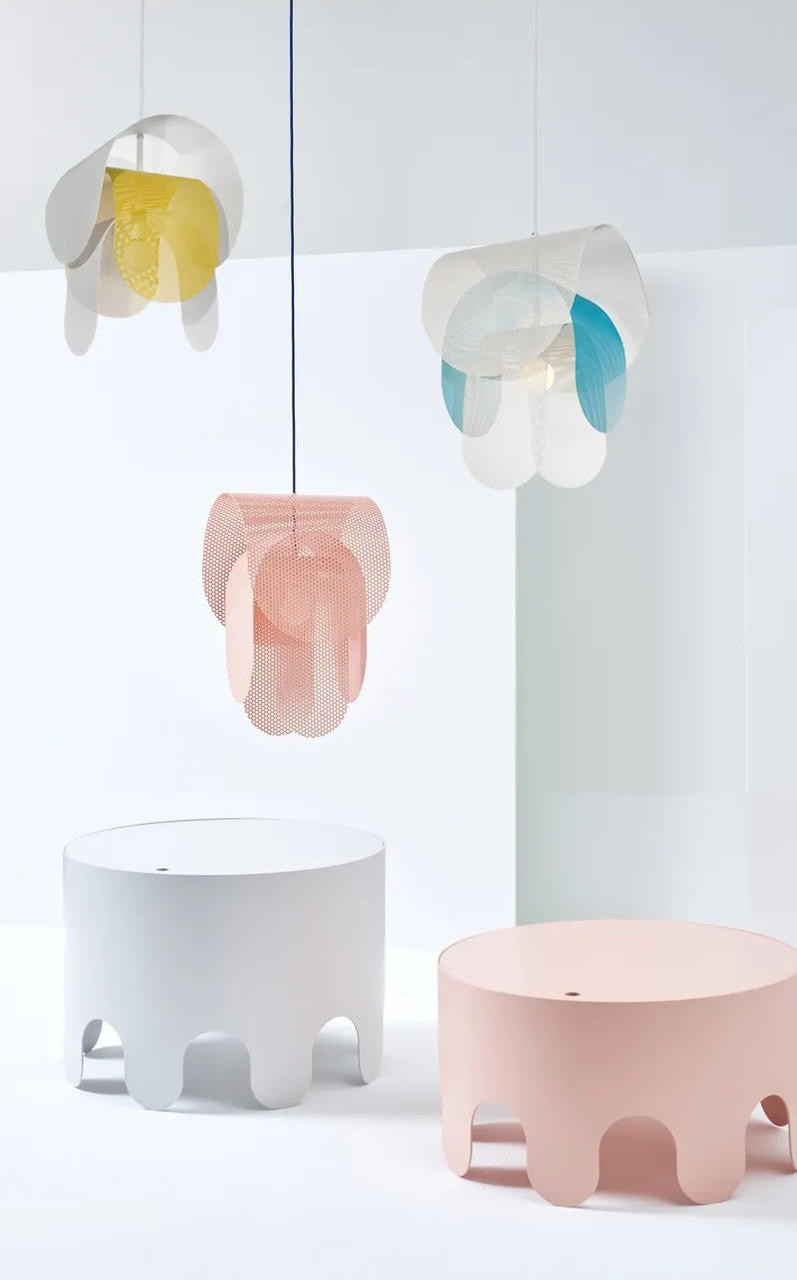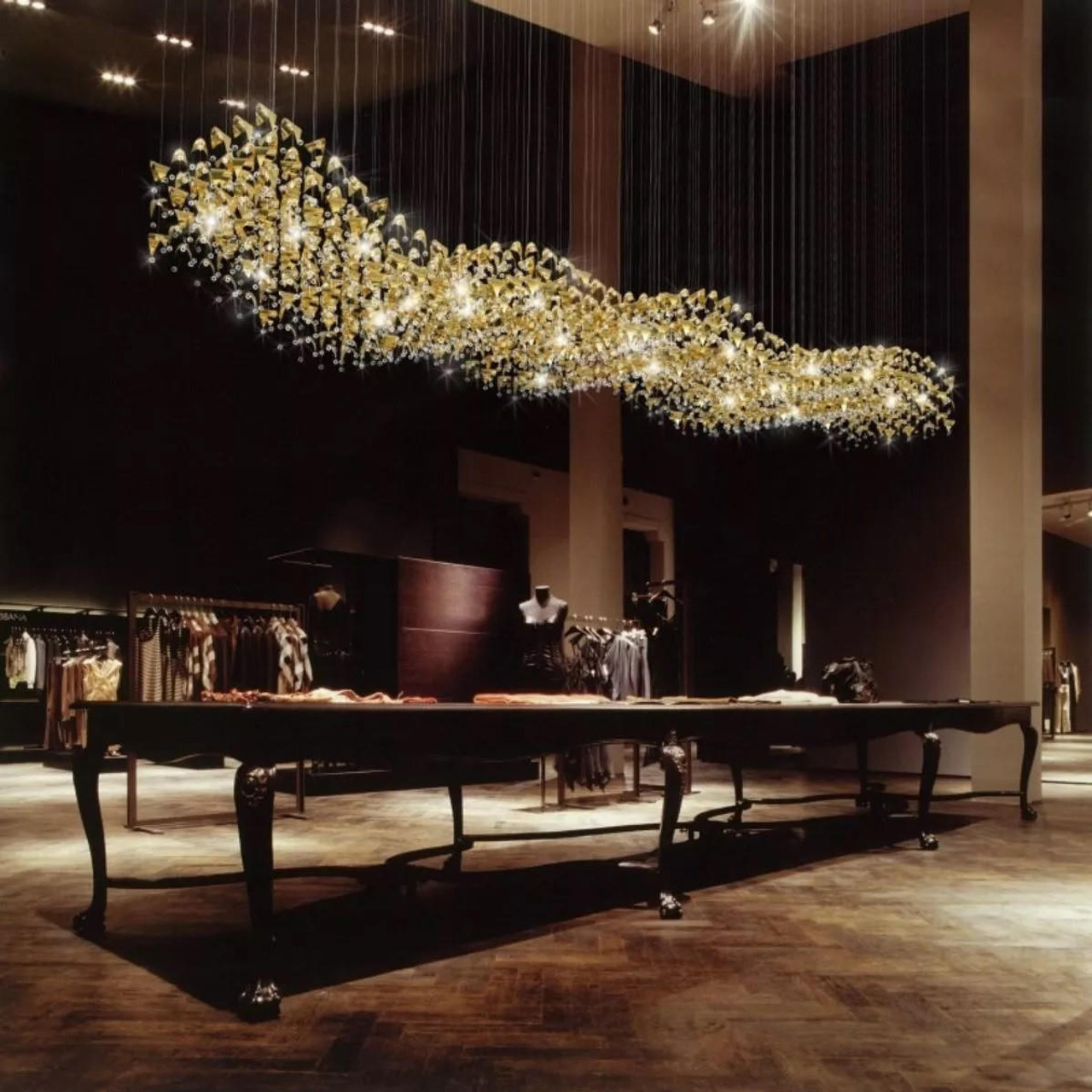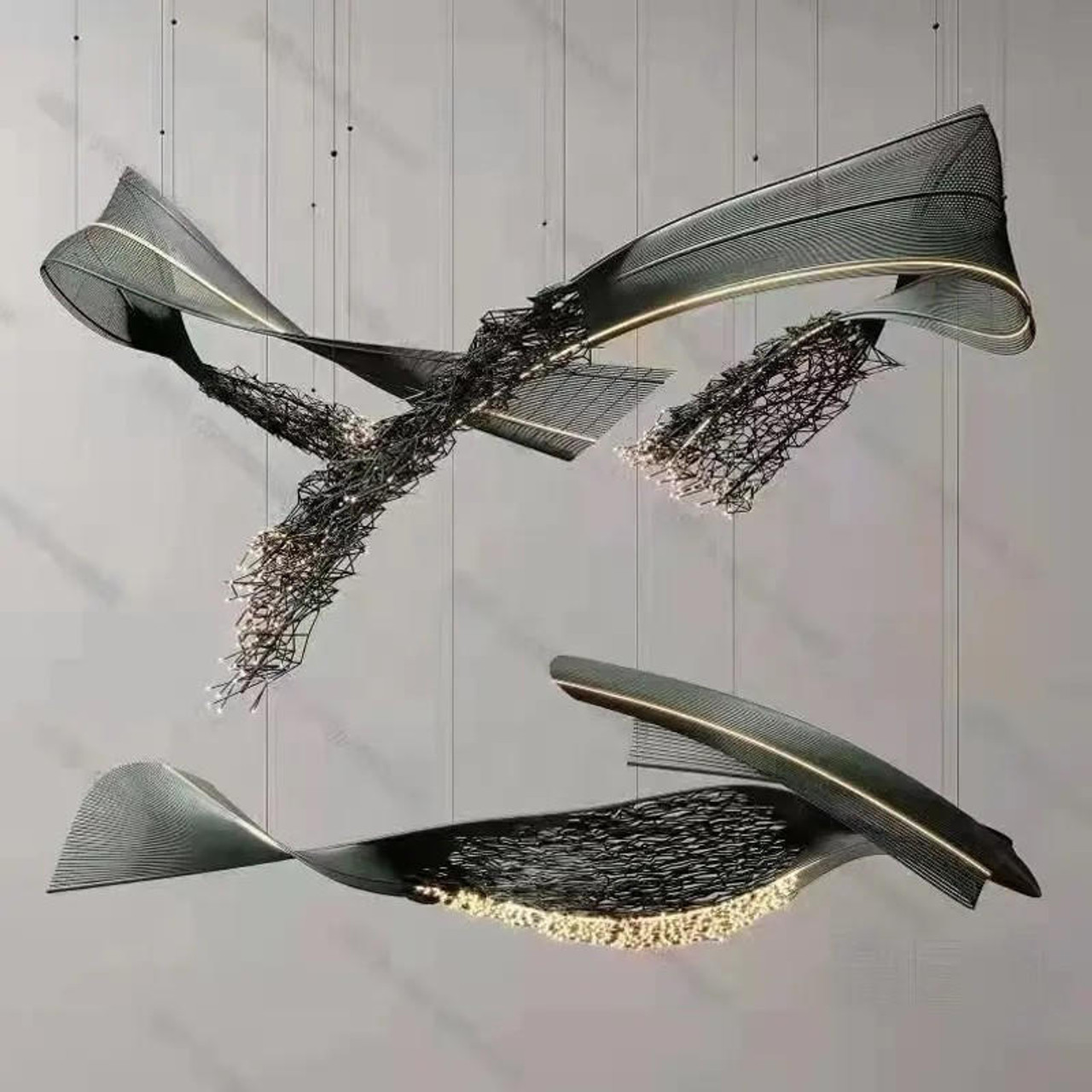Ingo Maurer’s Legacy: Pushing Boundaries in Modern Lighting Design
Posted by Carl Jenkins - Senior Architectural Designer on 8th Sep 2024
In the world of modern lighting design, few names evoke the same level of respect and admiration as Ingo Maurer. His work transcended conventional boundaries, merging the worlds of art, technology, and architecture into a cohesive vision where light itself became the ultimate medium of expression. Maurer did not merely design lighting fixtures; he shaped atmospheres, provoked thought, and pushed the limits of what lighting could be. Over his five-decade career, Ingo Maurer created some of the most iconic and revolutionary lighting designs, firmly establishing his legacy as one of the most influential figures in contemporary design.
Ingo Maurer’s Beginnings: A Shift from Graphic Design to Light
Born in 1932 on Reichenau Island, Germany, Ingo Maurer initially pursued a career in graphic design, working in Europe and the United States. This background in visual arts would later shape his approach to lighting design, giving him an eye for composition, contrast, and proportion. In 1966, Maurer’s career took a significant turn when he released his first lamp, simply called Bulb. This oversized, yet minimalist light bulb design encased in a larger glass shell quickly garnered attention. It was a bold tribute to the humble light bulb, celebrating it as both a functional object and an aesthetic icon.
Bulb wasn’t just a light source; it was a statement piece—a symbolic gesture that laid the groundwork for Ingo Maurer’s design philosophy. It demonstrated his keen ability to turn everyday objects into works of art. The Bulb was included in the permanent collection at the Museum of Modern Art (MoMA) in New York, marking the beginning of Maurer’s rise to international recognition.
Maurer’s early career is crucial for understanding the evolution of his approach. As someone deeply influenced by Pop Art, Maurer’s designs often reflected the playful, irreverent attitude that characterized that movement. Much like Pop Art challenged the boundaries of high and low culture, Ingo Maurer’s lighting designs defied the expectations of what lighting should be, making the mundane magical and the functional artistic.
Emotional Impact: The Essence of Ingo Maurer’s Designs
Throughout his career, Ingo Maurer was fascinated by the emotional resonance of light. He viewed light as a medium that could evoke powerful emotions and memories, fundamentally changing the way people experience space. For Ingo Maurer, lighting was about much more than functionality—it was about creating a mood, telling a story, and shaping how we feel within a space.
Ingo Maurer’s Lucellino is a beautiful example of this philosophy. The piece features a simple light bulb adorned with delicate, feathered wings. It is not just a light—it is an embodiment of lightness, flight, and whimsy. The wings transform an ordinary light bulb into a symbol of freedom, evoking a sense of movement and weightlessness. This design blurs the line between object and metaphor, making the lamp not only a source of illumination but also a source of wonder. The interplay between form, function, and meaning is what makes Ingo Maurer’s designs so compelling.
One of Maurer’s most famous pieces, the Zettel’z chandelier, takes the idea of emotional engagement even further. This chandelier is composed of sheets of paper suspended around a light source, and users are encouraged to write personal messages, drawings, or notes on the paper. In this way, the Zettel’z becomes a constantly evolving work of art, infused with the emotions and thoughts of its users. The light interacts with the paper, casting shadows and creating layers of meaning that change over time. It’s an example of how Ingo Maurer’s designs invited interaction, making light a personal, emotional experience rather than just a practical necessity.
In many ways, Ingo Maurer’s work is about giving life to light. Whether it’s the playfulness of Lucellino, the evolving narrative of Zettel’z, or the explosive energy of Porca Miseria!, Maurer’s lighting designs do not sit passively in a room—they engage with it, challenge it, and transform it. His pieces evoke a wide range of emotions, from awe to amusement to contemplation, proving that lighting is as much an art form as it is a functional element of design.
Technology Meets Creativity: The Innovation of Ingo Maurer
In addition to his artistic sensibility, Ingo Maurer was a pioneer in embracing new technologies. His work consistently pushed the boundaries of what was technically possible in lighting design. Maurer wasn’t just interested in creating aesthetically pleasing fixtures—he was driven to innovate, to use the latest advancements in materials and technology to redefine how light could be used.
One of Maurer’s most groundbreaking designs was the YaYaHo lighting system, developed in the 1980s. This low-voltage system allowed users to adjust and manipulate the lights according to their needs. At a time when lighting was largely static, Maurer introduced a new level of flexibility and control, giving users the power to tailor their lighting environments. The modular system could be customized in various configurations, offering not just light but a dynamic interaction with space. YaYaHo was revolutionary because it anticipated the future of customizable, user-controlled lighting systems, something we now take for granted in modern smart homes.
But Maurer’s technological experimentation didn’t stop there. In the 1990s and 2000s, as LED technology began to emerge, Ingo Maurer was one of the first designers to see its potential. His LED Wallpaper design, launched in 2008, was a radical departure from traditional lighting. Instead of focusing on individual light fixtures, Maurer transformed entire walls into luminous surfaces. By embedding LEDs into wallpaper, he created a seamless light source that blurred the boundaries between lighting and architecture. This integration of light into the fabric of a space was a game-changer, offering a glimpse into the future of architectural lighting design.
One of Maurer’s later designs, the Flying Flames chandelier, continued this exploration of technology and form. In this piece, he used tiny LED flames suspended in mid-air, creating the illusion of floating candles. The minimalist design showcases Maurer’s ability to balance cutting-edge technology with timeless elegance. By making use of LEDs in a subtle, almost magical way, Ingo Maurer demonstrated that technological innovation could coexist with artistic beauty.
Collaboration with Architecture: Merging Light and Space
Ingo Maurer’s influence extended beyond the realm of product design. He frequently collaborated with architects and urban planners, using light to enhance the spatial experience in large-scale projects. His ability to integrate light into architectural environments demonstrated that lighting was not just an afterthought in building design—it was an essential part of how we experience space.
One of the most notable examples of Ingo Maurer’s collaboration with architecture is the Westfriedhof subway station in Munich. Working alongside architect Peter Lanz, Maurer transformed the otherwise utilitarian station into a dramatic, immersive space. Large dome-like lights in vibrant hues of blue, red, and yellow illuminate the cavernous platform, creating a surreal, almost otherworldly atmosphere. The bold use of color and light turns a functional transit space into an emotional experience, making the everyday commute a moment of beauty and reflection.
Ingo Maurer’s work in public spaces wasn’t limited to subway stations. His installations in plazas, museums, and urban environments showed a deep understanding of how light interacts with architecture on a grand scale. His work in lighting public spaces has had a lasting impact on the field of architectural lighting, influencing how designers think about the role of light in shaping the character and identity of urban environments.
Maurer’s collaborations with architects around the world helped to integrate lighting as a fundamental element of design rather than a secondary concern. His approach has inspired countless architects to reconsider how lighting can be used to enhance the emotional and spatial qualities of their projects, further cementing his legacy as a pioneer who changed the way we think about light.
Ingo Maurer’s Influence on Future Generations
The impact of Ingo Maurer’s work extends far beyond the pieces he designed. His philosophy of lighting as an art form, his willingness to experiment with new technologies, and his collaborations with architects have shaped the way future generations approach lighting design. Maurer’s influence can be seen in the work of contemporary designers who continue to push the boundaries of what is possible with light.
His use of LEDs and other advanced technologies laid the groundwork for the innovations we see today in smart lighting and energy-efficient design. His ability to blend technology and art has inspired a new generation of designers to think beyond the functional aspects of lighting and embrace its expressive potential. Designers now recognize that light can do more than illuminate a space—it can transform it, evoke emotion, and tell a story.
Ingo Maurer’s legacy also extends to the way we interact with light as consumers. His designs invited participation, encouraging users to engage with the light source in a personal and emotional way. Whether through the customizable elements of Zettel’z or the dynamic lighting systems of YaYaHo, Maurer showed that lighting could be more than just a passive object—it could be an active part of how we experience the world.
Conclusion: Ingo Maurer’s Enduring Legacy
Ingo Maurer was a true visionary, someone who saw light not just as a tool, but as a medium for art, emotion, and innovation. His designs are celebrated not only for their beauty but for the way they challenge our perceptions of what lighting can be. Maurer’s work pushed the boundaries of design, merging technology, art, and architecture in a way that few designers have achieved.
His influence on modern lighting design cannot be overstated. Through his exploration of new materials, his willingness to experiment with technology, and his collaborations with architects and designers, Ingo Maurer transformed the field of lighting designIngo Maurer’s legacy is one of boundary-pushing, blending art, technology, and architecture into a seamless exploration of light. Maurer did not simply design lighting fixtures; he created pieces that played with emotion, technology, and interaction, establishing a new paradigm for what lighting design could be. From his early work in the 1960s to his technologically advanced designs in the 21st century, Ingo Maurer consistently challenged the conventional limits of lighting, leaving a lasting mark on the world of design.
The Beginnings of a Visionary Career
Born in Germany in 1932, Ingo Maurer initially trained as a graphic designer. This background in visual arts informed his approach to lighting, giving him an understanding of composition, contrast, and the play of light and shadow. His breakthrough came in 1966 with his first lamp design, Bulb. A simple, oversized light bulb encased in a larger glass shell, the design was both functional and a commentary on the light bulb itself, elevating an everyday object to an art form.
Maurer’s early work, including Bulb, reflected his interest in Pop Art, where mundane objects are celebrated for their cultural and aesthetic significance. Maurer’s genius lay in his ability to take this concept further, turning lighting fixtures into playful, emotional experiences that defied the purely utilitarian role of light. His Bulb would later be included in the permanent collection at the Museum of Modern Art (MoMA) in New York, marking the start of his global recognition.
Light as Emotion and Expression
Ingo Maurer’s work is marked by a deep understanding of how light shapes emotion and atmosphere. Lighting, for him, was not merely a tool for visibility—it was a medium that could evoke feelings, create intimacy, or inspire awe. This philosophy is evident in works like Lucellino, a light bulb with delicate, feathered wings that seem ready to take flight. This design transforms the ordinary into the extraordinary, playing with the metaphor of lightness and freedom.
Maurer’s designs often embodied a sense of playfulness, but they were also deeply emotional. The Zettel’z chandelier, for instance, invites users to personalize the light by writing on the paper sheets that surround it. Each note, drawing, or message becomes part of the chandelier’s composition, making the piece an evolving expression of its owner’s thoughts and feelings. In doing so, Maurer created a personal connection between the user and the object, transforming light into a vessel for communication and memory.
One of Maurer’s most daring pieces is Porca Miseria!, a chandelier that looks like an explosion of broken dishes and cutlery, suspended in time. The piece is chaotic, yet balanced, and it exemplifies Maurer’s ability to take concepts like disorder and destruction and turn them into beautiful, functional designs. Porca Miseria! challenges the viewer’s expectations of what a chandelier should be, showing that light can be a dynamic, disruptive force, just as much as it can be a calming presence.
Innovation in Technology: Pushing the Boundaries of What’s Possible
While Maurer’s designs often leaned on whimsy and emotional depth, he was also a relentless innovator, constantly pushing the boundaries of what was technically possible in lighting design. In the 1980s, he introduced the YaYaHo lighting system, a low-voltage, modular system that allowed users to manipulate light sources to suit their needs. At a time when most lighting systems were fixed and rigid, YaYaHo introduced flexibility and user interaction, offering a glimpse of the future of customizable lighting solutions.
Maurer’s pioneering use of LED technology in the late 1990s and early 2000s further showcased his commitment to innovation. The LED Wallpaper, which transformed walls into seamless, glowing surfaces, was a bold departure from traditional lighting designs. Rather than focusing on fixtures, Maurer integrated light directly into the architecture, creating luminous environments where walls themselves emitted light. This innovation blurred the boundaries between light and space, offering a glimpse of the potential for light to become an integral part of architectural design.
In 2010, Ingo Maurer created the Flying Flames chandelier, a minimalist design where tiny LED flames appear to float in mid-air. These “flames” are actually LED lights, and their simplicity and elegance encapsulate Maurer’s approach to lighting—cutting-edge technology combined with artistic beauty. By using LEDs in a subtle and imaginative way, Maurer once again demonstrated that technological advances could coexist with artistic expression.
Collaboration with Architecture: Integrating Light and Space
Ingo Maurer’s work wasn’t limited to product design; he also made significant contributions to architectural lighting. He understood that light is an essential part of how we experience space, and he often worked alongside architects to enhance the spatial qualities of buildings through innovative lighting solutions.
One of Maurer’s most celebrated collaborations is the Westfriedhof subway station in Munich, where he used large, colored dome lights to create a surreal, atmospheric experience. The station’s vast, cavernous space is illuminated in shades of blue, red, and yellow, turning what could have been a purely functional transit space into a place of beauty and reflection. This project is a perfect example of how Ingo Maurer used light to elevate everyday environments, transforming them into immersive experiences that engage the viewer on an emotional level.
Maurer’s understanding of the relationship between light and space also extended to his work in public plazas and museums. His lighting installations in urban environments often transformed the way people interacted with the space, adding layers of meaning and emotional resonance. Whether through dramatic, colorful lighting or subtle, integrated designs, Maurer’s ability to collaborate with architects allowed him to leave a lasting impact on the built environment.
Influence on Contemporary Lighting Design
Ingo Maurer’s influence on contemporary lighting design cannot be overstated. His work challenged the conventional thinking that lighting was purely functional, showing the world that light could be playful, emotional, and deeply personal. His willingness to embrace new technologies—particularly his early adoption of LEDs—helped shape the direction of the lighting industry. Today, energy-efficient lighting solutions are the norm, and Maurer’s pioneering work laid the groundwork for the integration of technology and artistry in modern lighting design.
His designs have inspired a new generation of designers to think beyond the purely functional aspects of light and to explore its expressive potential. Whether in the form of customizable lighting systems, interactive fixtures, or architectural lighting that transforms space, the legacy of Ingo Maurer continues to influence how we approach lighting in both residential and public spaces.
Conclusion: Ingo Maurer’s Enduring Legacy
Ingo Maurer’s career was marked by an unrelenting curiosity and a willingness to challenge the status quo. His designs pushed the boundaries of what lighting could be, not only illuminating spaces but also transforming them. By merging art, technology, and emotion, Maurer redefined the role of light in our lives, showing that it is not just a tool for visibility, but a medium for expression.
Maurer’s work will continue to inspire designers, architects, and everyday consumers to think differently about light—to see it as something more than just a practical necessity, but as a dynamic force capable of shaping mood, evoking emotion, and telling stories. Through his innovations, Ingo Maurer changed the way we experience light, leaving an indelible mark on the world of design.

